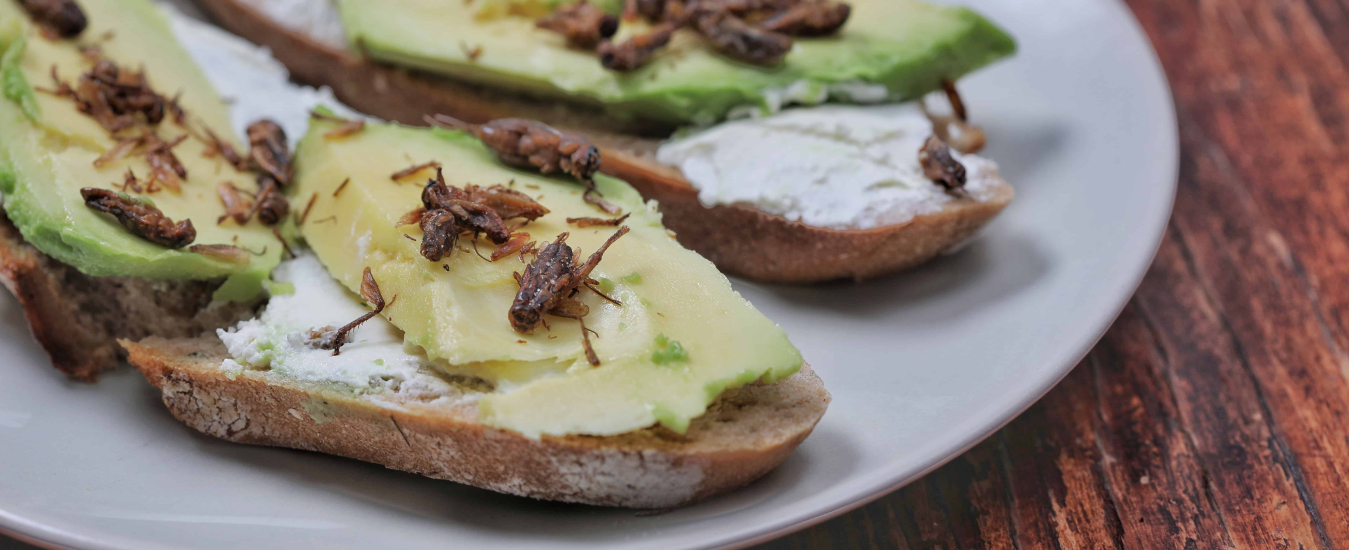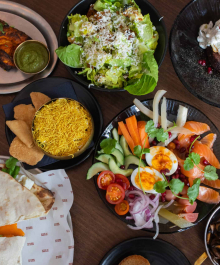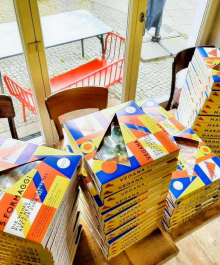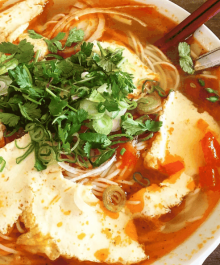

In a city of eco-activists and bio-bandwagons, should Berliners embrace eating insect protein?
In 2016, I interviewed Fernando from Mexican canteen and mezcaleria, Tentacion. He told me that, although he serves meat at his restaurant, he’s actually vegetarian. The only non-vegetarian thing he truly misses eating is: insects. I thought he was completely mad.
Now, more and more insect products are creeping their way onto the shelves of Berlin supermarkets. Insect flour-infused pastas like PlumentoFoods can even be purchased at DM (along with your 49cent shower gel).
Then there are gastronomic/activist projects like Mikrokosmos, who you can find selling insect dishes at streetfood events like Markthalle Neun. They also organise pop-ups and workshops around Berlin to spread the good word about eating bugs.
While the health and environmental benefits of eating insects are becoming known to more and more people, is the allure of an eco-friendly protein alternative enough to convince Berliners to start eating bugs?
It opens up a wider question of choice – the choice to eat truly sustainable foods instead of damaging fad foods (see: avocados and almonds), the choice to eat what we want (see: meat) instead of the foods we should be eating, and the choice to have vegetarian and vegan morals whilst living in the time where we still have the privilege to do so.
I met with Marc Schotter, Founder of INSNACK – a Berlin-based insect snack start-up that’s currently being piloted in 14 supermarkets around Berlin. We talked about edible insects and a not-so-distant future where we all eat them.
BLY: So, can bugs save the world?
Marc: If our population keeps growing at the rate it is, there will be 10 billion people on this planet by 2050. This means, in order to provide enough food for everyone, we’ll need to increase our calorific production by 60%.
Our environment will hugely suffer if we aim to meet this demand using our current farming methods, which are becoming increasingly unsustainable. We’re already clearing more and more of the Amazon to make way for cows, and this will only get much worse in the future.
Just look at the numbers: cricket farming requires 90% less space than cows, 99.95% less water, 83% less feed and produces 99.96% less CO2. Crickets also contain more than twice as much protein and iron as beef does and twice as much calcium as cow’s milk.
Also, the cricket farm I work with uses unsold refuse food from supermarkets as feed. If you talk about sustainability and a future-food, eating insects really is the way to go.
Luckily, given that we have a protein surplus in Europe, we still have a choice.
In some African countries, it’s a different story. I was in contact with a student group from Germany who created an insect farm in Africa. Adding insect flour into an oatmeal, the farm provided the daily protein needs for a community of 300 people.
BLY: Do you see insects as a meat replacement?
Marc: I think it’s going to grab some of the market share, definitely.
Insects are part of the ‘alternative protein’ market, along with lab-grown meat and plant-based proteins like Beyond Meat, which is becoming more and more popular. The cool thing about insect flour is that it provides a lot of what’s missing from plant-based solutions. Crickets contain 70% protein, all the amino acids, tons of vitamin B12 and other nutrients so, in a way, it closes the gap.
I see cricket flour being used to enrich non-meat dishes. It could be a new approach to making food – taking traditional recipes and boosting the protein and nutrient count by incorporating the flour. You could also add it into falafel… Actually, I thought about making Berlin’s first insect kebab – that could be pretty funny.
BLY: How does the edible insect market look at the moment?
Marc: There are currently many different product types available, many of which target the fitness market. They’re generally energy and protein bars, pastas and shakes which use insect flour.
Insect flours are super handy in this regard because you can add them to a product or recipe, provide the additional protein and nutrients, and people can enjoy eating it without overtly thinking that they’re eating insects.
BLY: Where do you see the bigger picture for edible insects?
Marc: At some point, supermarkets will sell all kinds of different insect-based products… similar to how you can buy shrimps or sushi now.
I predict we’ll see more and more products containing the flour, as well as rising demand for whole insects, roasted or sold in a way that you could prepare them yourselves at home.
It’s going to take time to reach this because, well, especially here in Europe, the visual appearance is a huge factor.
BLY: Yeah… because they look like insects.
Marc: Let’s be totally honest, I would still need to overcome a certain fear to eat a tarantula, but with crickets or mealworms or even grasshoppers… they’ve become food to me now.
Fighting this fear is going to take a long time – to convince everyone that it tastes nice, that it’s good for your body, it’s good for the environment… You need to really hammer this message home.
We use crickets in our products because of the good, nutty flavour, the nutritional value and the high levels of protein they contain, but feedback from our customers has also shown that people are more open to trying crickets than something with the word ‘worm’ in its name. It’s difficult.
BLY: You mentioned sushi earlier. I’d never thought about it like that.
Marc: Yeah, the funny thing with sushi is that people were afraid of it at first, because… raw fish. People thought it was mad, senseless, almost barbaric. And now supermarkets in Berlin have in-house sushi chefs. Things change.
Having eaten a few different types of insects, I’ve certainly lost the fear-factor – and with the insect powder, you’re blissfully unaware you’re eating anything six-legged. That being said, I think we’ll all need some heavy-duty Pavlovian conditioning before we, like Fernando, begin to salivate on hearing a cricket’s chirp.
Eating insects is certainly a strong alternative for conscientious meat-eaters, but it would be interesting to see how this trend evolves into the vegetarian and vegan communities. The other day a vegan person admitted to me that they guiltily eat insects for the nutritional content, and I’ve seen plenty of vegetarians hungrily sharking down fish.
Will our habits, mindsets and ethics really shift when it comes to sustainability?
Find out more about INSNACK here.
Photos: Kfir Harbi






